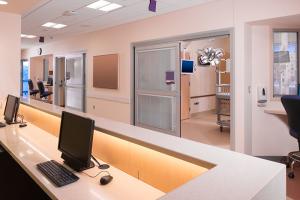Technology and patient-centered design
From electronic health record systems to advanced building automation platforms to cutting-edge imaging modalities, today's health care facilities employ the latest innovative technologies to provide safe and effective care.
This presents a number of challenges for the industry's design and construction community, which is charged with accommodating all of these technologies while providing a patient-centered environment of care.
Delivering a safe, efficient and homelike patient room is difficult enough without having to worry about accommodating wireless and wired information infrastructures, patient education systems, computerized order entry terminals, bar-coding equipment, electronic patient beds, and specialized HVAC and lighting controls, to name just a few of the technologies being integrated into rooms these days.
So, for this edition of HFM Design News, we’ve brought you four articles that tackle the vexing problem of technology integration from a number of different angles.
In our first feature, we present benchmark data from our 2014 Health Facility Design Survey, conducted in cooperation with the American Society for Healthcare Engineering. With information on technologies being integrated into overall hospital designs as well as into patient rooms, we paint a picture of the demands being placed on health facility designers.
Moving deeper into the nuts-and-bolts issues of technology integration, our next feature looks at furniture, wall systems, support carts and mounting apparatus all aimed at seamlessly integrating clinical and IT equipment into the health care environment. It’s a must-read for any designer struggling with this issue.
The next feature looks into the future by examining how technology will influence health care design. Contributed by the American College of Healthcare Architects, this article posits that decentralized health care delivery will continue to accelerate because of advancing technology and that urban planning concepts can help to deliver care to connected communities.
Finally, we take a look at the technology issue from the construction side in a feature that focuses on the importance of protecting sensitive health care spaces and equipment from construction-related vibrations and noise.
Health care organizations have become high-tech enterprises, and the design and construction professionals who serve them must get up to speed on the challenges presented by this evolution.



